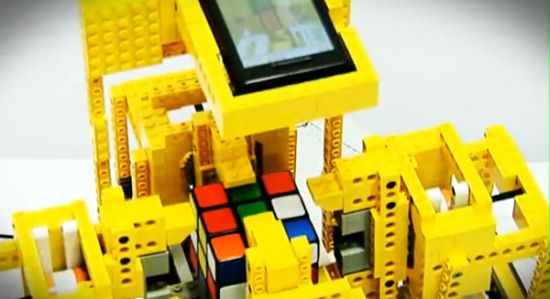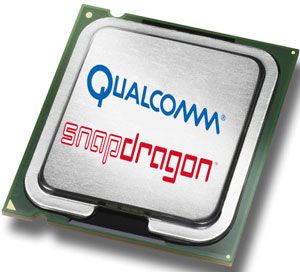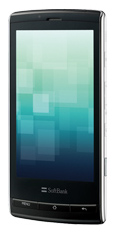A few years ago, nobody would have considered using an embedded system to run a server. But now, with the advance of technology, more and more servers are running embedded systems from the lower end such as home-based NAS (Network Access Storage) to higher-end for data-centers, cloud computing, web 2.0… This is the higher-end that Marvell targets with its Quad Core ARM ARMADA XP MV78460 running at 1.6GHz with “16,600 DMIPS performance at less than 10 watts”. Please checkout Marvell ARMADA XP Product Brief for further details. The main selling point of such solution is the power consumption compared to traditional Intel x86 based servers. According to Marvell, 50% of the cost of running a data-center is the electricity bill to run the server and especially to cool the room with air-conditioners. So let’s do a little exercise. Let’s take the estimated power consumption of Google data-center in Oregon that […]
Xibo Open Source Digital Signage Tutorial / Demo
This is the second blog entry about Xibo, in case you have missed the first you can read XIBO: An Open Source Digital Signage Server/Client to make yourself familiar with Xibo and learn how to install it in a Windows XP computer. This mini-tutorial follows the instruction in Xibo’s training documentation and Xibo’s Introduction and Basic Operation The video below shows how to create a layout with a background, different zones with videos, images, html pages and an RSS feed and schedule it for a specific Xibo player. Here’s the resulting output in Xibo’s player. (The audio does not match. Since I had some problems during recording, I simply used a background music instead). You can get obtain free backgrounds at the Layout exchange section of Xibo’s website. We used Blue Boxes – 1920×1080 – for the background image of our tutorial. The RSS Feed is http://twitter.com/statuses/user_timeline/114751985.rss from CNXSoft twitter […]
ARM Android Based Rubiks Cube Solver
David Gilday – a chip designer at ARM – has got two hobbies: Playing Lego and Rubik’s Cube. He must have been tired to turn the sides of the game manually so he designed a robot to solve the Rubik’s Cube within an average of 15 seconds. So here’s how it works: A Robot built with Legos using 6 motors and an Android phone connected to it. He’s using an ARM11 platform running Android (Looks like a Google Nexus One to me). You mix the Rubik’s Cube, place it in the middle of the robot, then it starts.. the smartphone scans all faces of the Rubik’s Cube (with the back camera of the phone), an algorithm calculates the moves (using a 300MB database), then the robot turns the Rubik’s Cube to solve the puzzle and finishes with a nice spin once the 3D-puzzle is solved. The algorithm is written in […]
Samsung Orion ARM Cortex A9 – Nexus S
Samsung recently showed off its dual-core Cortex-A9 Orion featuring quad-core Mali-400 GPU at Techcron 2010. The Samsung Orion (model name: S5PV310XH) will run at 1GHz (this frequency might be increased later on: I’ve read 1.2 GHz, 1.5GHz or even up to 2 GHz.) and use 45nm lower power manufacturing technology. Samsung already have a BSP using Linaro kernel and the development board having the following characteristics: Samsung Orion SoC Low power audio subsystem Embedded GPS 2D Graphics Acceleration TFT 24-bit true color LCD Controller MALI-400 3D Graphics TV-out and HDMI interface support Multi-format codec up to 1080p @ 30fps The device would runs Android on top of Linaro kernel which takes care of all the low level stuffs. If you are interested in developing for this platform, you can already download and play around with Linaro 10.11 which already supports Cortex A8 and A9 platforms. The Samsung Orion is rumored […]
Linaro: Embedded Linux for ARM
Linaro is a Not For Profit (NFP) engineering organisation that works on Linux based open source software and tools. The organisation focuses on the ARM platform, mainly ARM v7A architecture, for example ARM Cortex-A8 or dual-core Cortex-A9 processors and is sponsored by ARM, Freescale, IBM, Samsung, ST-Ericsson, and Texas Instruments. The purpose of Linaro is to reduce the number of different Linux kernel for the ARM platform. They plan on releasing tools and Linux kernel every 6 months. And after about 6 months of existence, with around 80 engineering staff, they managed to release their first public version: Linaro-10.11 on the 10th of November for TI OMAP4 Panda Board, IGEPv2, Freescale iMX51 and ST-E U8500 platforms. This release is based on Linux 2.6.35 kernel, GCC 4.4 toolchain and uBoot 2010.09. They released Linux 10.11 source code and tools, the hardware packs and the build instructions. Linaro also planned several technical […]
Resources for Qualcomm Snapdragon: MSM7x30, MSM8x55, MSM8x60 and QSD8x50
The Snapdragon processors are the latest generation of Qualcomm mobile chips used in smartphones (e.g. Google Nexus One) and tablets (e.g. Dell Streak). There are currently 3 generations of Snapdragon chipsets: First-Generation: QSD8x50 chipsets consisting of QSD8250™ and QSD8650™ based on ARM11 core running at 1GHz, a 595 MHz DSP, hardware-accelerated 3D graphics with Adreno 200 GPU, integrated Bluetooth 2.0 and GPS capabilities, a 12-megapixel camera and 720p video encode / decode. Second-Generation: MSM8x55 chipsets consisting of MSM8255™ and MSM8655™ based on ARM11 core running at 1 GHz as well as MSM7x30 chipsets consisting of MSM7230™ and MSM7630™ running at 800 MHz. All second generation chipsets use Adreno 205 GPU. Third-Generation: MSM8x60 chipsets platform consisting of MSM8260™ and MSM8660™, dual-core CPU running up to 1.2 GHz with Adreno 220 GPU. The QSD8672 running at 1.5GHz will also be part of the third generation and samples will be shipped by the […]
USB Hotplug Parameters and A Simple Linux USB Hotplug Script
USB Hotplug allows your system to detect a USB device has been inserted or removed and perform certain actions upon the USB device detection. The article below is largely inspired by http://linux-hotplug.sourceforge.net/?selected=hotplug which does not seem to work anymore. USB hotplugging involves: MODULE_DEVICE_TABLE support in the USB Device Driver API, so that a driver’s probe() routine is called only when it’s very likely to want to bind to a particular interface. USB always uses this. Support for invoking the hotplug helper (/sbin/hotplug by default) when devices are added or removed. This functionality is enabled only by CONFIG_HOTPLUG. That hotplug helper usually contacts a policy agent which handles the USB-level configuration or activation tasks appropriate to this device and the current system configuration. Boot-time configuration (“cold-plugging”) can be managed by the /etc/rc.d/init.d/hotplug startup script, if the “usbmodules” command line utility is available. (There is also a “diet hotplug” tool for use […]
3D capable Android 2.2 Smartphones
Lately all the rage was for 3D high definition televisions, but now 3D is also coming to mobile handsets. Softbank will release 2 smartphones – “Galapagos 003SH” and “Galapagos 005SH” – in Japan between the end of 2010 and spring 2011. The smartphones will run Android 2.2 on a platform based on Qualcomm MSM8255 @ 1Ghz, feature a 3.8″ display and the capability to record HD videos (720p maximum). The main differences between the 2 handsets are that Galapagos 005SH will have a slide-out keyboard and a built-in 8 Megapixel camera whereas 003SH won’t have the keyboard but the camera will be 9.6 Megapixel. Both handsets will be manufactured by Sharp which also owns the 3D technology. The 3D images and videos will be viewable with the naked eyes, i.e. you won’t have to wear glasses. This will be used for picture, videos and 3D games. The smartphones will be […]












